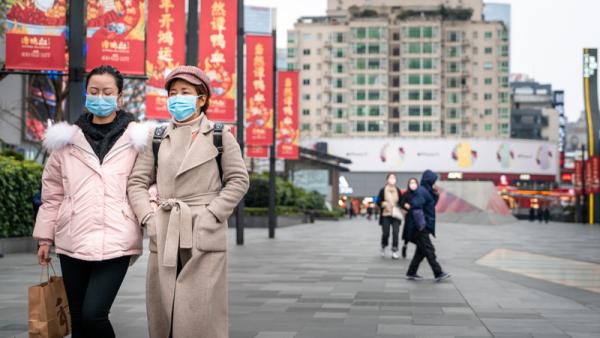IHOR SULYATYTSKYY / Shutterstock

Elena Collinson, Senior Project and Research Officer, Australia-China Relations Institute, University of Technology Sydney |

James Laurenceson, Director, Australia-China Relations Institute, University of Technology Sydney |
This article appeared in Network 10’s 10 daily on February 10 2020.
As the coronavirus crisis has unfolded, the heavy cost of the Chinese governance system’s favoured tools of censorship and information control has been on display.
And that cost has likely extended to Australia as well.
On December 30 last year, a Wuhan doctor, Li Wenliang, had alerted other health professionals to the emergence of a mystery virus. Four days later he was reprimanded by local police for having 'severely disturbed the social order' and forced to sign a document pledging to 'stop [his] illegal behaviour'. The provincial health commission also issued a notice warning that 'organisations or individuals are not allowed to release treatment information to the public without authorisation'.
But by January 21, by which time it had become clear the virus was spreading out of control, the Chinese central government’s political and legal affairs commission had adopted a starkly different line: 'Anyone who deliberately delays and hides the reporting of [virus] cases out of his or her own self-interest will be nailed on the pillar of shame for eternity'.
But the central authorities haven’t been able to exonerate themselves entirely. Wuhan’s mayor admitted early mistakes were made, he also noted that as a local official he could only disclose information after he’d been given 'approval to do so'.
Last Friday, Dr Li tragically succumbed to the disease himself.
His death, and the acute public anger that followed, has fixed, at least for now, the spotlight firmly on the flaws of a governance system that can not only hurt Chinese citizens but also have transnational impact.
China’s government is now reporting on virus statistics and engaging with the international community in the containment of the virus. The country was praised by the World Health Organization late last month for its 'commitment to transparency', and last week US President Donald Trump lauded Chinese president, Xi Jinping’s handling of the crisis.
But China’s past track record and the government’s disdain for institutions like a free press inevitably mean that doubts remain.
Modelling research just published in leading medical journal The Lancet, for example, estimated that 75,815 people had been infected in Greater Wuhan by January 25, a figure about 100 times bigger than official numbers at the time.
Five million people passed through Wuhan and 4,000 travelled abroad from the city after the first cases were flagged before the city was locked down with a quarantine order on January 23.
Compounding the concern is that there are signs of a renewed government crackdown on information availability, this time led by the central authorities. On February 3, a meeting of China’s Politburo Standing Committee called for improved 'public opinion guidance' and the strengthening of control over online media. State media have been provided with directives to focus on 'positive' stories about the outbreak. The South China Morning Post reported that on February 4 China’s Ministry of Public Security reminded police officers that 'political security was of utmost importance in handling the outbreak.'
To be sure, doubts around numbers of people infected by the virus aren’t all about censorship and any government would struggle with a public health crisis on a similar scale.
Last Friday, Neil Ferguson, director of Imperial College London’s MRC Centre for Global Infectious Disease Analysis, estimated only around 10 percent of coronavirus cases in China were being picked up. But this was because it has become clearer that many infected only display mild symptoms while unwittingly contributing to the spread of the virus.
Still, what is beyond question is just how highly the Chinese system prioritises political stability.
The rapid escalation of the Australian response on February 1, particularly the decisions to close the border to non-citizens who had visited China in the last 14 days and send Australian evacuees from Wuhan to Christmas Island for quarantine, has had some evacuees and commentators wondering out loud whether base political instincts, perhaps even outright racism, rather than medical advice, might be at play. (The government insisted it was following the advice of medical professionals.)
But it is also likely to be reflective of the uncertainties Australian policymakers have when it comes to dealing with China.
The fact that Australia earns more than $16 billion every year from Chinese students and tourists means it wouldn’t have been a decision Canberra took lightly.
The travel ban prompted criticism from the Chinese embassy in Australia, who alleged they had not been advised of the move beforehand, a claim the Department of Foreign Affairs and Trade immediately refuted.
And this gets at the bigger problem. While Australia and China are major trading partners and are happy to talk up the relationship on that basis, the reality is that the two governments frequently interact in a low trust state. In turn that can making cooperating in challenging scenarios, whether they be health, security or economic, that much harder.
Authors
Elena Collinson is a senior researcher at the Australia-China Relations Institute, University of Technology Sydney.
Professor James Laurenceson is Director of the Australia-China Relations Institute at the University of Technology Sydney.


